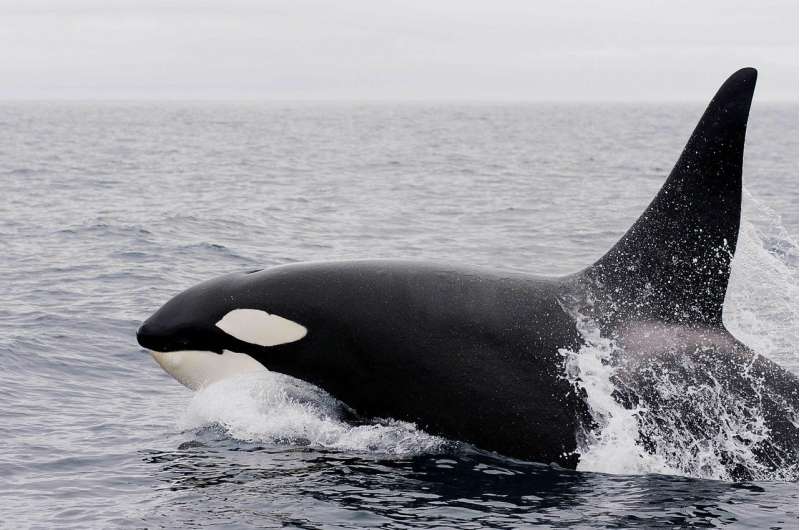This article has been reviewed according to Science X's editorial process and policies. Editors have highlighted the following attributes while ensuring the content's credibility:
fact-checked
peer-reviewed publication
trusted source
proofread
Killer whales breathe just once between dives, study confirms

A new study has confirmed the long-held assumption that orcas take just one breath between dives.
The researchers used drone footage and biological data from tags suction-cupped to 11 northern and southern resident killer whales off the coast of B.C. to gather information on the animals' habits.
Published in PLOS ONE, the study found that residents spend most of their time making shallow dives, with the majority of dives taking less than one minute. The longest dive recorded was 8.5 minutes, for an adult male.
"Killer whales are like sprinters who don't have the marathon endurance of blue and humpback whales to make deep and prolonged dives," said co-author Dr. Andrew Trites, professor in the UBC Institute for the Oceans and Fisheries (IOF).
Confirming orcas take only one breath between dives allowed the researchers to calculate how many liters of oxygen adults and juveniles consume per minute. This provides another piece of the puzzle in estimating orca energy expenditure, and eventually, how many fish the animals need to eat per day.
"Researchers can then work out if the orcas are getting enough food, including the endangered southern residents, a key factor in their conservation," said first author Tess McRae, IOF masters student.
Killer whales in the study took 1.2 to 1.3 breaths per minute while resting and 1.5 to 1.8 while traveling or hunting. Comparatively, humans tend to take about 15 breaths per minute when resting and from 40 to 60 while exercising.
"It's the equivalent of holding your breath and running to the grocery store, shopping, and coming back before breathing again," said co-author Dr. Beth Volpov, IOF postdoctoral fellow.
More information: Tess McRae et al, PLOS ONE (2024). DOI: 10.1371/journal.pone.0302758. journals.plos.org/plosone/arti … journal.pone.0302758
Journal information: PLoS ONE
Provided by University of British Columbia




















